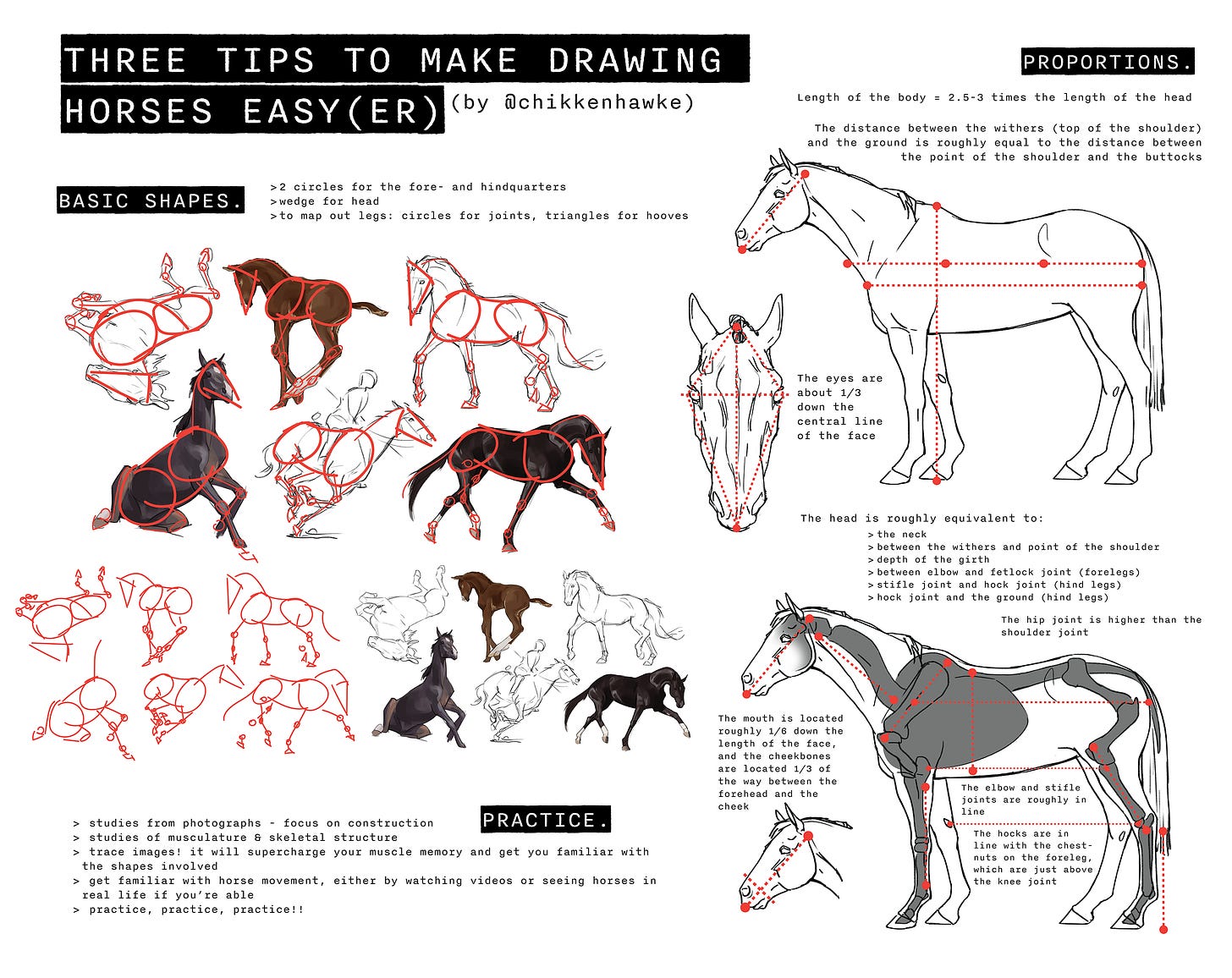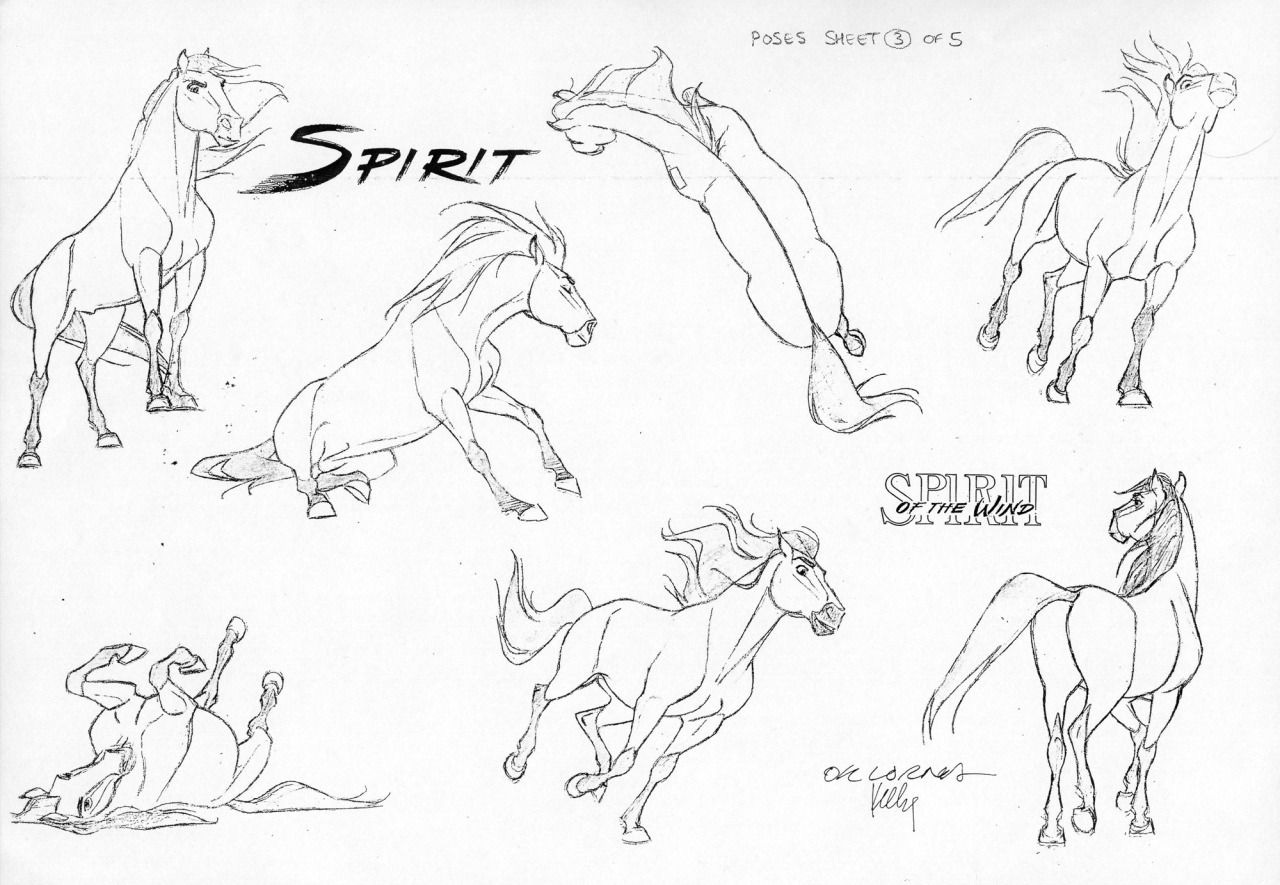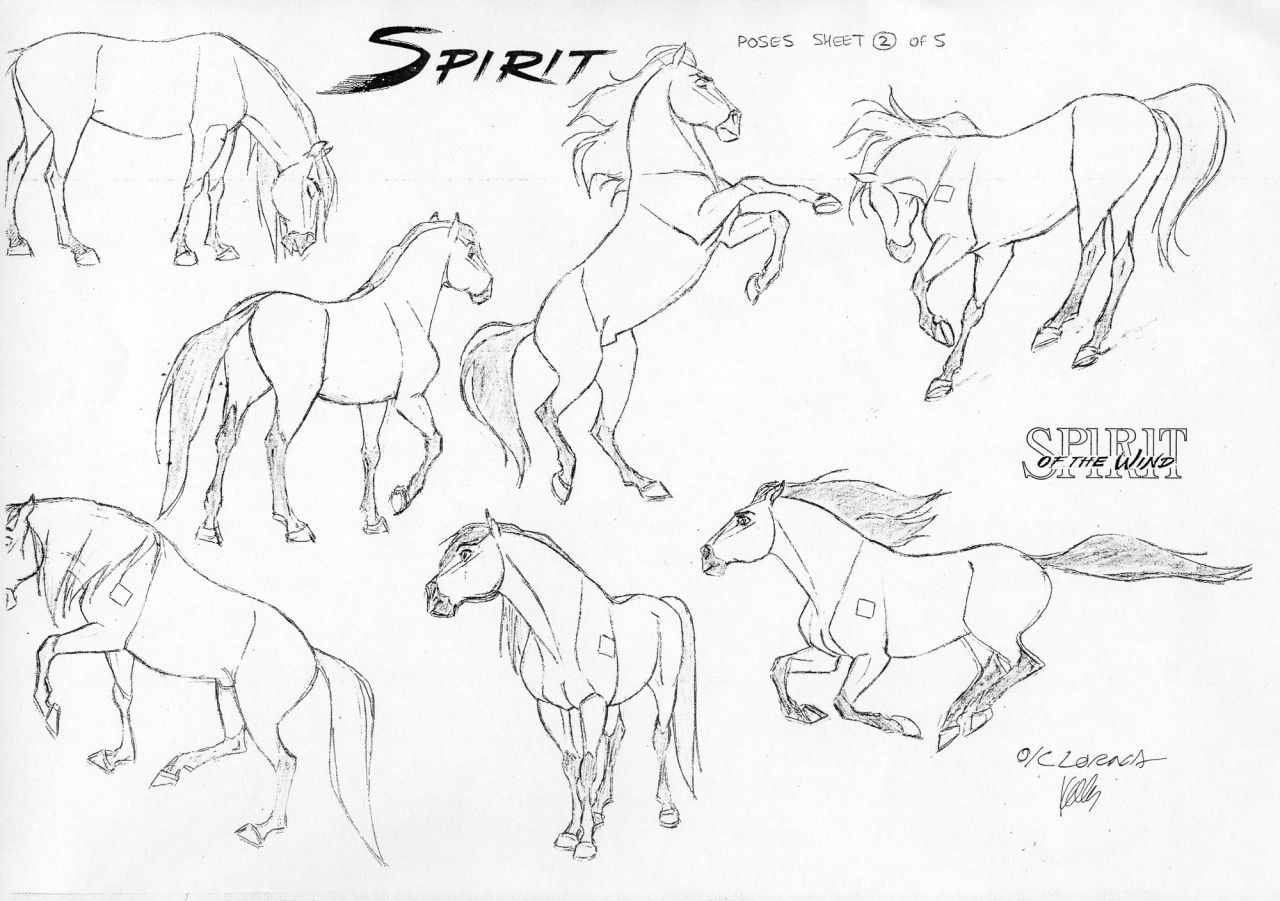Welcome to Art Nerds! We are very happy to be here with our first ever post. To kick it off, Naomi has a post for us about understanding horse proportions.
***
Horses are notoriously tricky to draw.
Just like people, horses come in a vast array of different shapes and sizes. However, like people, the following general proportions give a good starting guide on how everything is laid out.
Let’s talk through this hand cheat-sheet I made:
Using the head to measure
The head is a very useful first measure. It is, according to these general proportional rules, approximately the same length as:
the neck,
the depth of the girth,
the distance between the elbow and the fetlock joint on the foreleg,
the distance between the shoulder and wither (the high point of the horse’s shoulder),
between the ground and the hock joint,
and between the hock joint and the stifle joint
The body
For overall body layout, we can use the following rules:
The hock joint is even with the chestnuts, which are located just above the knee joint.
Note: A horse’s chestnuts are a patch of callus present above the knee on the forelegs, and below the hock on the hind legs. Most horses have them on all four legs, however some breeds, and zebras, wild asses and donkeys, lack them on the hind legs. They are believed to be vestigial toes.
The elbow and stifle joints are roughly in line. The point of the buttock is slightly higher than the shoulder joint.
The length of the body is about two and a half to three times the length of the head. The distance between the ground and the horse’s withers is roughly equal to the distance between the point of its shoulder to its buttocks.
The head
The head can essentially be constructed from a diamond shape from the front view, with the eyes located roughly a third of the way down the face. From the side it forms a wedge shape, with a big flat oval plane for the cheek. The cheekbones are roughly ⅓ of the way down from the brow. The mouth ends roughly ⅙ of the way along the length of the face.
Further resources
For further reference, I have a video on my approach to drawing horses, as well as a cheat sheet that covers everything here available for free download.
Alexandria Neonakis has also written a very good post on the subject which I highly recommend.
To finish with, here’s some inspiration and reference from Spirit: Stallion of the Cimarron (2002). An adept simplification of the equine form into a stylised animated medium, and one that I return to often.
That’s it for this week. Thanks for reading!
And until next time, happy drawing!







My friend was bemoaning that they couldn't find any how to draw horses resources that focused on understanding the proportions like this. You have saved the day!
Damn that note about chestnuts was my favorite bit. I enjoy horse lore.